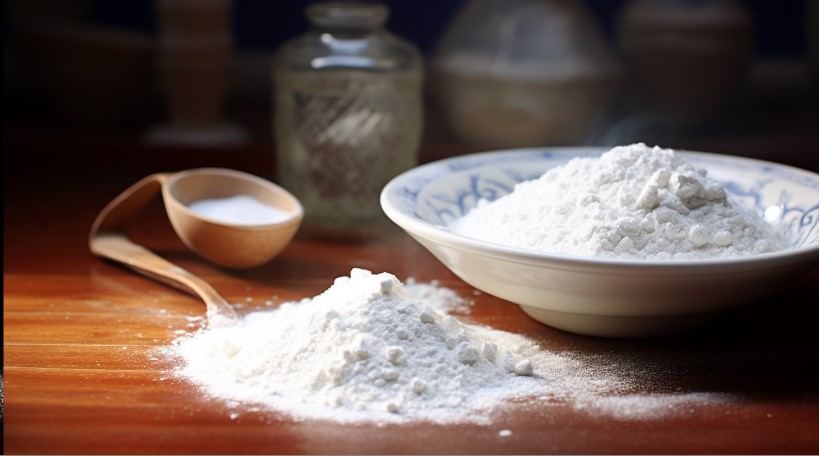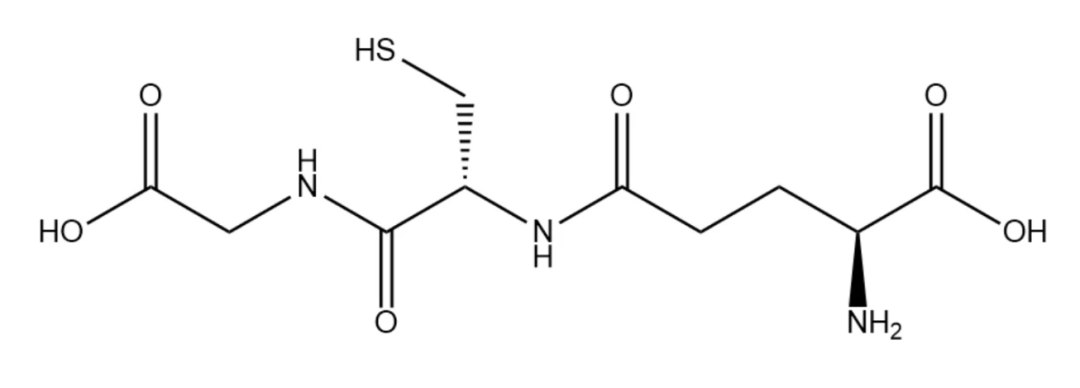Применение и прогресс в исследованиях восстановленного глутатиона

Reduced glutathione (GSH) is the most abundant non-RNA-encoded thiol-containing tripeptide in eukaryotes, and its significant antioxidant activity makes it the focus of many studies. With the development of science and technology, the potential physiological activities of GSH have been gradually discovered, including integrated detoxification, delaying aging, enhancing immunity, anti-tumor, etc. With the in-depth research on the active functions of GSH and the enhancement of consumers’ health awareness, the application value of GSH has become increasingly prominent, and it is widely used in food, medicine, cosmetics, health products and other major health fields.

GSH is a water-soluble tripeptide formed by the condensation of L-glutamic acid (L-Glu), L-cysteine (L-Cys) and glycine (Gly). The structural characteristics of GSH mainly include the following aspects: ① The γ-carboxyl group of L-glutamic acid combines with the α-amino group of L-cysteine to form a γ-peptide bond, which can prevent GSH from being cleaved by intracellular peptidases and can also Prevent hydrolysis by γ-glutamyl transpeptidase on the plasma membrane; ② The two carboxyl groups, one amine and one thiol in GSH are hydrophilic in nature, making GSH an extremely water-soluble compound; ③ The free sulfhydryl group (-SH) of L-cysteine is the most important active group in GSH and can participate in redox reactions and nucleophilic displacement reactions. In the body, more than 90% of GSH exists in reduced form. GSH can be converted to oxidized glutathione (GSSG) by glutathione peroxidase, and then reduced to GSH again by glutathione reductase.
Currently, the United States, Europe, China and Japan are the main countries and regions that consume GSH. The application of GSH in European, North American and Southeast Asian markets is relatively mature, mainly in the fields of cosmetics and health products. In Europe, the rise of cosmetics, personal care and health care products industries with antioxidant, immunity-improving, liver-protecting, detoxifying and whitening effects has greatly expanded the application of GSH. China’s GSH market is in its infancy and is currently mainly concentrated in the pharmaceutical field. Related GSH products have been widely used clinically and can be used as detoxifiers, antioxidants, anti-allergic agents, etc. They are the main treatment drugs for liver diseases and a variety of Drugs for the auxiliary treatment of diseases. With the growth of national income and the improvement of health awareness, the demand for nutritional and health products continues to increase, which will promote the continued growth of the GSH industry.
Imbalances of GSH are associated with various diseases, such as diabetes, neurodegenerative diseases, AIDS, cancer or aging, which are mainly based on the interference of oxidative stress protection at the cellular level. Therefore, GSH can be used as a biomarker to detect disease or as a potential drug or prodrug for specific treatments.
In addition to pharmaceuticals, GSH is also very prominent in the field of medical beauty as a skin whitening agent. It can scavenge free radicals, resist oxidation, whiten skin, lighten spots, and has anti-aging effects. As a medical beauty raw material, it is the main component of whitening injections, some whitening skin care products and oral whitening health care products.
In the food field, GSH’s powerful antioxidant properties have also attracted much attention. On the one hand, it can be used in the processing of dairy products, meat, baby food, seasonings, etc. to exert antioxidant effects, inhibit browning, extend the storage period, and enhance flavor. and other functions; on the other hand, as a functional active factor, it is used in the production of functional foods and oral health products.
Reduced glutathione is an important antioxidant, immune enhancer and detoxifier in the body. It is closely related to cell signal transduction, amino acid transport, enzyme activity, nitrogen and sulfur metabolism, etc., and has good application potential and prospects. Research on technologies related to the industrial production of reduced glutathione has always been a research hotspot in the industry. Fed-batch fermentation using yeast is still a common method for industrial production of reduced glutathione. As an effective functional factor and active ingredient, reduced glutathione has been widely used in the fields of food, health products and medicine.
At the same time, in agricultural production, the commercial application of reduced glutathione as biofertilizer and feed additive has just begun in fields such as plant cultivation and animal health. It will increase the production and income of crops and improve their quality, as well as enhance the immunity of animals. , play an important role in promoting growth and improving meat quality. With the in-depth research on reduced glutathione and the exploration of its active functions, the application scope of reduced glutathione will continue to expand. However, there are still deficiencies in functional research, industrial production and product application of reduced glutathione, which require continued in-depth research.
() ()